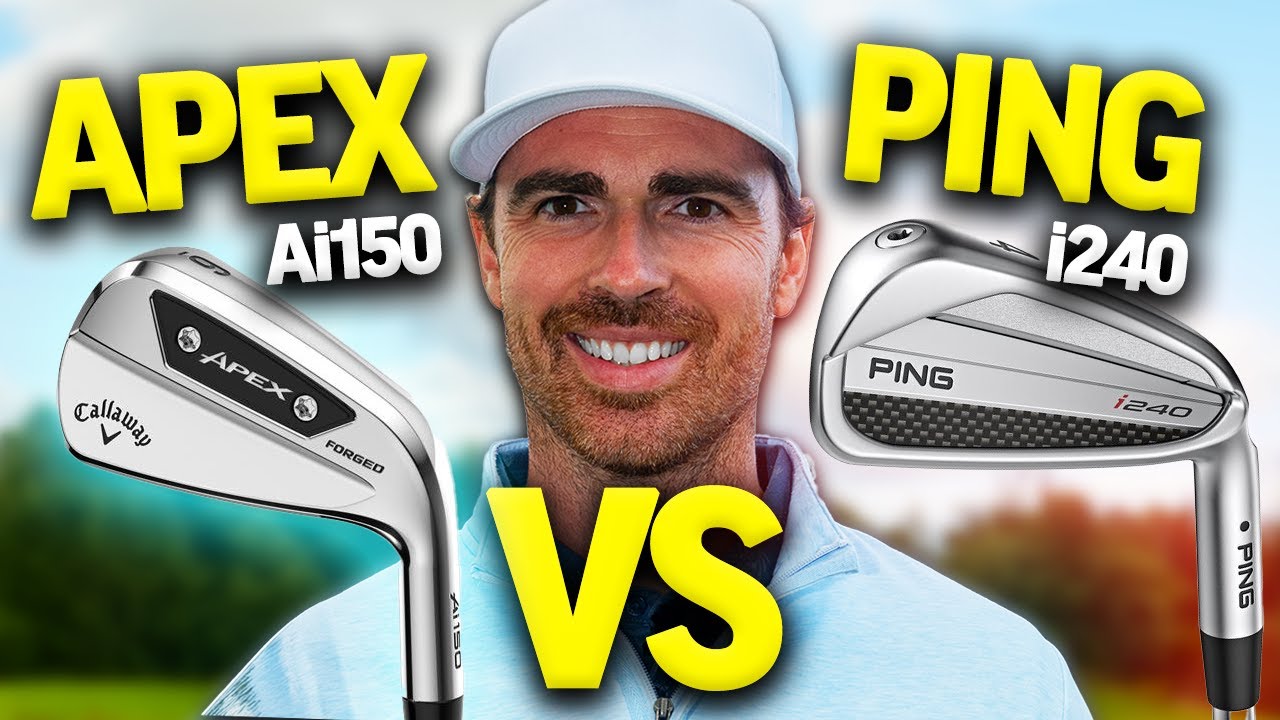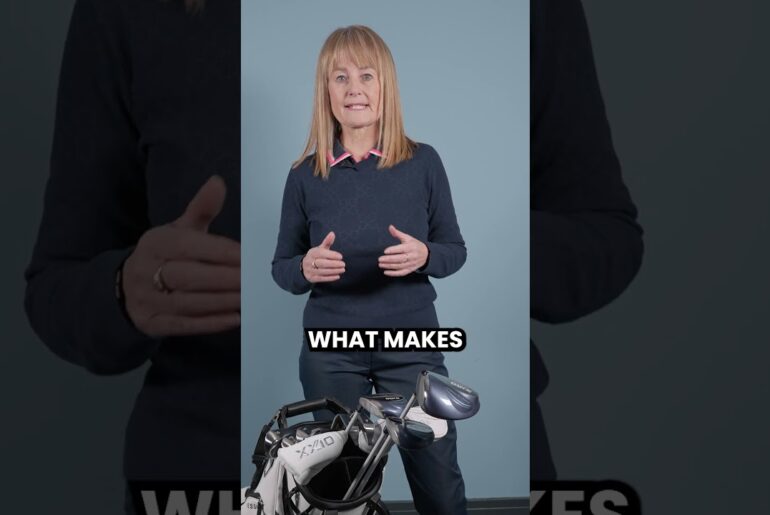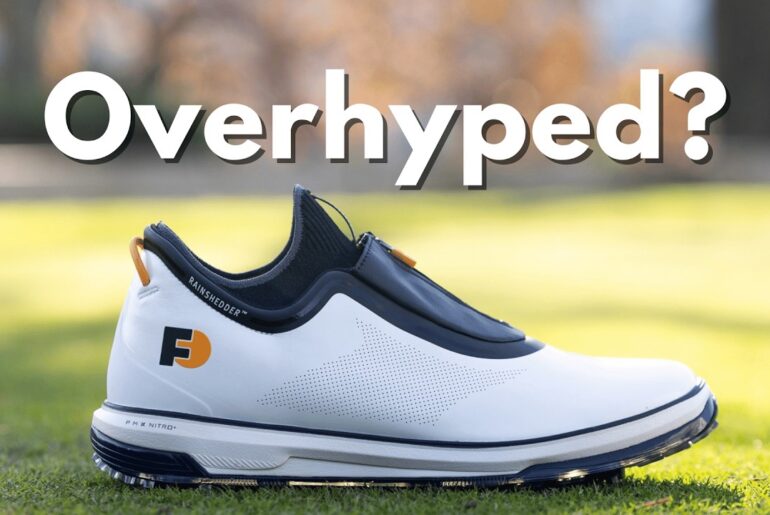Callaway Apex Ai150 vs Ping i240 Irons | This Was So Tight!
We have two of the newest players’ irons of 2025, and they are going head-to-head to see how each one performs.
Both irons have new shapes and technology that deliver more speed, consistency and forgiveness, but which one will come out on top?
Our gear editor James Tait reveals all as he takes it to the Duke’s Course in St Andrews, to see how the Callaway Ai150 and the PING i240 irons compare.
We used one of the best launch monitors in the game, the Foresight GCQuad, to gather the all-important data GCQuad | Foresight Sports Europe
0:00 Intro
0:17 Looks
1:28 Technology
2:53 Sound and Feel
3:55 Forgiveness
5:08 GCQUAD Numbers
8:12 James’ Opinion
#Callaway #Ping #callawaygolf #pinggolf #callawayapexai150 #pingi240 #callawayvsping #ai150vsi240
FOR MORE GOLF CONTENT
• Subscribe to the bunkered YouTube account for FREE here for all the latest golf tips and video content – https://www.youtube.com/c/bunkered
• ‘Like’ us on Facebook – https://www.facebook.com/BunkeredOnline
• Follow us on Twitter – https://twitter.com/BunkeredOnline
• Follow us on Instagram – https://www.instagram.com/bunkeredonline
—
EVERYTHING YOU NEED TO KNOW ABOUT BUNKERED
bunkered is your home for golf.
The magazine is largest selling golf title in Scotland. In fact, it outsells all other golf titles on Scottish newsstands combined.
With a distinctly Scottish edge, the magazine offers something for everyone with features, interviews, equipment, tuition, travel, competitions and much more besides.
Meanwhile, our website, https://www.bunkered.co.uk, is the place to find all of the latest news and views from across the whole cross-spectrum of the game of golf.
Why not stick us in your bookmarks? https://www.bunkered.co.uk/
—
Video shot on location at The Duke’s Course, St Andrews The Duke’s Course | Old Course Hotel, Golf Resort & Spa | St Andrews
In my hands, I have the brand new Pingi 240 and the brand new Callaway Apex AI 150. These are two of the newest players irons in 2025, and we’re going to put them head-to-head, crunch the data, and see which one comes out on top so you can decide which one goes in your bag. All right, so we’re going to start off with the looks. Now, these are both two very different looking irons, but we’re going to start off with the Callaway. Now this year they’ve gone with this kind of chrome half chrome finish at the bottom. Obviously more of a satin finish at the top. Looks really clean, slightly compact as well based off the TCB model, but when you put it down at a dress because of that chrome finish, you basically just see grooves which helps you really frame the ball. It does look quite small and compact because of that. But if you’re someone that does like that smaller head, it’s going to be really, really nice on your eye. Now moving on to Ping. Now, this is classic ping. It’s got that hydropower finish, but a brand new badge at the back as well. Little little bit of color, little red in the eye of the i240, but it’s also slightly ever so slightly thinner on the top line as well, but because it is more of that matte finish, you’re not going to get any glare like you would obviously with that chrome in the Callaway. slightly bigger in blade length as well, but when you put it down, it doesn’t actually look like there’s too much in it at all. It’s just because it doesn’t have that glare. But two really good-look irons. All right, so we’re going to dive into the tech now, but I’ll start off with the Callaway first. Now, hollow body design. You’ve got that 455 face cup, which is going to give you really good ball speeds, especially in those longer irons. But then when you move into the scoring irons, you have that 174 face, which is just going to give you a bit more precision and control, especially off those grooves as well. Now, of course, you have that AI 10X face, which if you’ve seen in the Elite range this year, you’re going to get loads of mini sweet spots across the face, so when you do mish hit it, you’re going to see a great consistency in distance, control, and spin as well. Now, moving on to ping. This is slightly different. We have the brand new ABS badge on the back. Now what that is is 8% lighter which allows more weight to be redistributed especially with the slightly bigger head shape. So higher MOI means more forgiveness, more stability especially on those m hits as well. What you also have is a new slightly wider groove which is going to give you more spin, higher launch as well because of where that MOI and CG is. Now you’ve got the classic screw weight in the toe again giving you more stability, but you’re also going to see an 11% increase in dispersion. So because of that higher MOI, because of that extra bit of stability, you’re going to see a tighter dispersion, which let’s be honest, if you need more forgiveness and you want to hit the ball straighter, it’s going to help you a lot. Now, the sound and feel of both irons was very, very good. Obviously, with the Callaway Apex being a forged iron, the feel and feedback off of each shot is really good. So, if you are quite a high skill player, low to mid handicapper, you’re going to get some great feedback, especially in the hands of this when you’re trying to hit shots, flight shots, and especially if you kind of mishit one, you’ll feel it. However, the distance is going to be pretty consistent. So, really impressive feel off of the Apex AI 50 with that forged head. Now, if we move into ping, this is your 431 cast iron head. Feels solid, feels like a ping, just really smooth, really crisp, and especially when you mish hit it, it does feel pretty soft and nice when it flies off that head, too. I would say out of the two, if you want something which is a little bit more kind of solid with a good feedback, the Callaway Apex AI 150 is going to be great. But if you want something which is still going to feel really nice and smooth, especially on those m hits from heel to toe, your Pingi 240 is going to be a great option. All right, so we’re going to talk about numbers, but before we do that, this is what we used. We used this absolute ripper. Look at this bad boy. GC quad. One of the best kits about and we use obviously the little kind of stickers as well to make sure all that club data is super accurate. So looking at forgiveness in the 9 iron, dispersion’s really tight. Numbers are very similar, but again, what you’re finding is great consistency, great control even across the face in the scoring irons, which is great to see. You move into your seven irons. Again, same story. Great consistency, especially off heel and toe strikes. I didn’t strike it very well today. So, I found off the toe that it was going the same similar distances as when I did actually hit it off the center of the face, which was pretty cool, and that was in Ping and Callaway. And then moving into the five irons, the one thing I would say is, especially when I wasn’t hitting it very well today, the AI 10X face was working very well. It was working very hard as well coming off the heel and toe side was very very straight. I was quite surprised and similar story with the Pingi 240 especially on those m hits but just shows you that that extra bit of MOI and stability you’re getting that tighter dispersion as well. Okay, now for the fun stuff. This is the numbers. So 9 iron and what you’re seeing with Callaway slightly less carry a 180 ball speed 136 launch 16.5 peak height 126 descent angle 51 and backspin 93. Now the backspin between Callaway and Ping very similar was 9361. The descent angle though a little bit higher 53 peak height a lot higher almost 15 ft more. So what you’re seeing right there is a higher launch straight away. Landing angle 17.8, ball speed 140. So it was a little bit quicker. And the carry 183. So there’s three yards in it, but both with completely different flights. Quite interesting on the scoring iron front. But if you go into the seven iron, this is where we start to see the forgiveness kick in a little bit more and that speed off of the 455 face cup and off of that cast iron head of Ping. So carry distances with the Callaway 215 with Ping 214. Ball speed with the Callaway 151 with Ping 150. Launch angle with Callaway 11.3 in comparison to pings of 12.2. The height again is what’s going to be different with Callaway 114 compared to Ping which was 121. Descent angles not much in it. 47.9 with Callaway, 48.5 with Ping. And then the spins literally splitting hairs at 6,500 RPM. So not much difference in terms of numbers, but the big thing again is just height. You’re going to see a big difference in height. So reason for that is a Callaway head is 2° stronger at 31 in comparison to ping which is 33. So you’re going to expect to see a little bit lower launch, a little bit more ball speed, bit more distance, which is exactly what you’re getting. There’s not much in it, but it is noticeable when you’re hitting these irons and you got them in your hands. Okay, moving on to the five iron. Now this is quite an important one because these are irons that you want to be as forgiven as possible and as easy to hit. Now, if we start with Callaway, uh you’re looking at 248 carry in comparison to ping, which is 245. Um your ball speed 165 with Callaway, 167 with ping. So, slightly quicker on that front. Launch angle is 10.5 with Callaway, 10 with ping. And then your peak height is 127.8, call it 128 in comparison to ping, which is 128. Now the back spin is lower with Callaway by quite a bit. So 5160 and then ping is 5558. So you’re going to see more of a penetrating flight and a penetrating kind of launch with Callaway. And you’re going to see just a little bit more more spin with Ping, which if you’re looking for more spin in your longer irons, then Ping is going to be a great option. But overall, what I would say is they’re both very different. They both are in that player’s range, but the Ping I240 is going to be verging into that player’s distance iron. It’s got a lot more forgiveness. It is easier to hit in the longer irons, I would say, especially with it being a slightly larger footprint. When you sit it down on the ground with that matte finish, it does frame the ball really, really nicely. So, if you are, I would say a higher handicap, maybe coming from a game improvement iron, wanting to go down into something which is a little bit more compact in shape, that’s going to be a great transition to go into. If you are a highly skilled player, a low handicapper, or a mid- handicapper that prefers a smaller compact head shape, the Callaway is going to be a great option. It’s a little bit harder to hit in comparison, but with that AI 10X face, it is a phenomenal option because the forgiveness is there even in that compact shape. Really nice to hit, great, great feel, great sound, great feedback. Definitely is going to be geared more to your lower handicappers or good ball strikers. Even if you are a high handicapper and you like that smaller head, you’re still going to get great forgiveness. And if you want that slightly lower ball flight, it’s going to be a great option as well. Hopefully, you’re able to decide which one you’re going to put in your bag. And if you haven’t already, remember to like, give us a sub, and we’ll see you next time.








1 Comment
The stronger lofted iron launched lower and spun less…. Here's an idea, bend each "number" iron towards each other so they match lofts and then compare them head to head… Better players ignore loft creep!